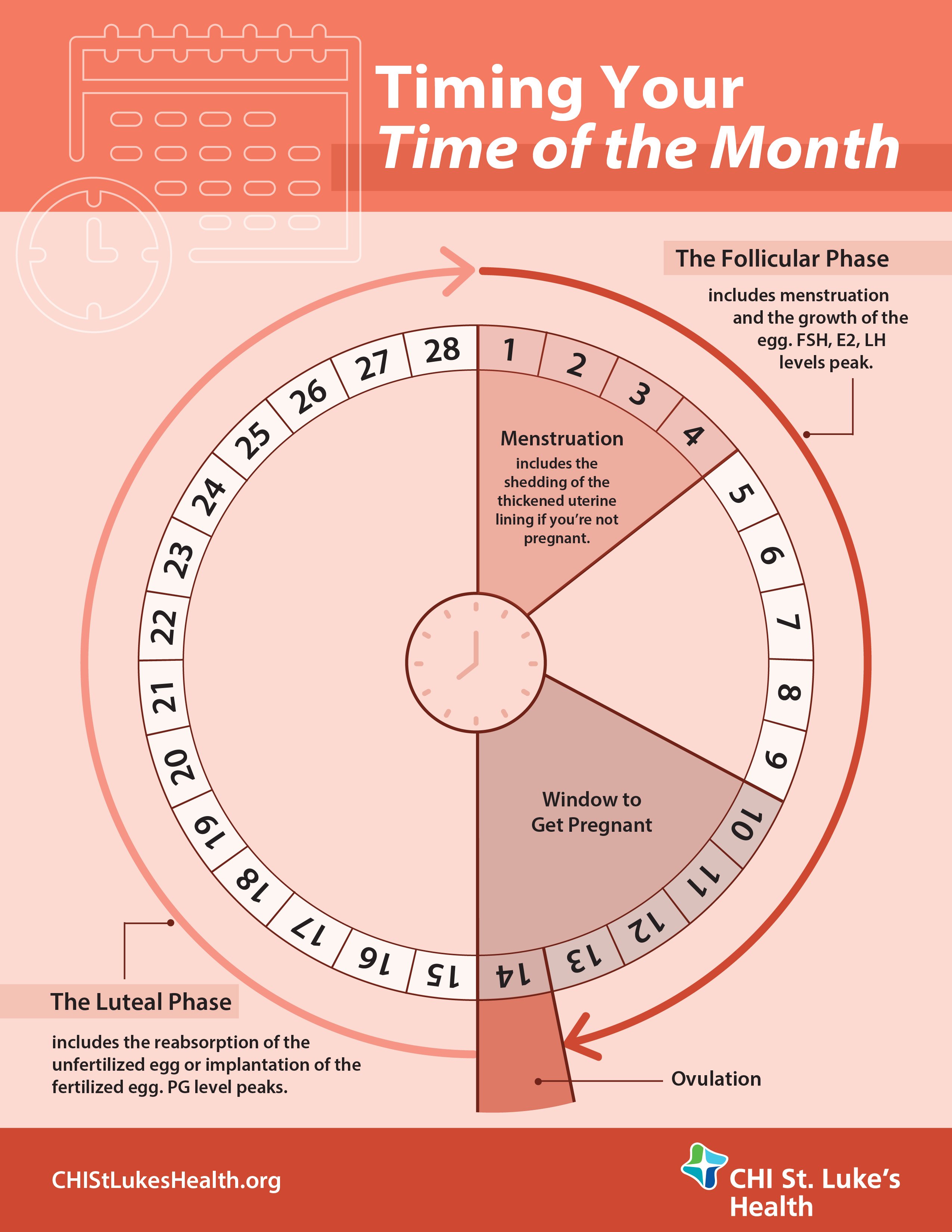St. Luke's Health joins CommonSpirit.org soon! Enjoy a seamless, patient-centered digital experience. Learn more

Whether you’re trying to become pregnant or you just want to know more about your body, it’s important to be familiar with the stages of your menstrual cycle. Tracking your period can help you become more attuned to your health and even help you conceive! The following chart shows the different lengths of each stage for the average 28-day cycle, but you shouldn’t worry if yours is shorter or longer; the lengths of each stage vary from woman to woman.
Five main hormones control the rhythm of the menstrual cycle: luteinizing hormone (LH), follicle stimulating hormone (FSH), estrogen and estradiol (E2), and progesterone (PG). They act as messengers to let your body know when it’s time to move to the next phase of your cycle. For example, LH increases to let your ovaries know that it’s time to send the egg down the fallopian tube, also known as ovulation. If you want to get pregnant, start trying to conceive five days before ovulation, as sperm can live in the female body for that duration.
Use this helpful infographic to visualize the phases of your cycle.

Tracking your menstrual cycle is one of the main tenets of the Creighton Model FertilityCare™ System, a birth control-free method for avoiding or achieving pregnancy, available at Caritas Women’s Care. If you would like to know more about your reproductive health or are trying to become pregnant, schedule an appointment with a Baylor St. Luke’s Medical Group OB/GYN. Our team is dedicated to providing complete obstetrical and gynecologic care for women of all ages and in all stages of life.
Sources:
Healthline | Stages of the Menstrual Cycle
What to Expect | 7 Signs of Ovulation
Clue | The menstrual cycle: more than just your period
Medical News Today | Facts About Sperm Health and Lifespan
Looking for a doctor? Perform a quick search by name or browse by specialty.